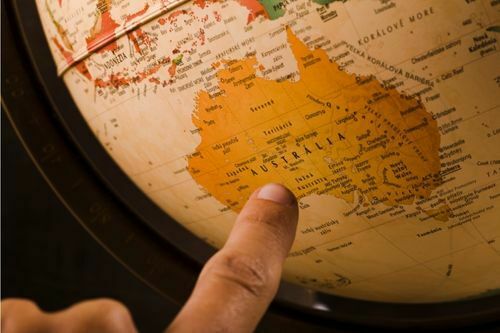Table of Contents
- Smallest continent | Here’s everything you should know!
- Smallest continent | An overview
- Smallest continent | All about the Australian land
- Smallest continent | The climate of Australia
- Smallest continent | Natural regions of Australia
- Smallest continent | Native species in Australia
- Smallest continent | Australian and Oceanian differences
- Key takeaways
- FAQs
Smallest continent | Here’s everything you should know!
The world’s total landmass comprises seven different continents varying in size. While some of them are connected to one another, some are not. Each of them composes of a wide range of different countries.
By looking from both a population and a land area perspective, Australia is the smallest continent on the planet. Australia is the last of the lands solely because it was the final continent to be explored by Europeans, aside from Antarctica. Below you will find more information about this smallest continent.
Smallest continent | An overview

Australia, the largest country on Earth and the smallest continent globally, is between the Pacific and Indian seas in the Southern Hemisphere. Canberra, the capital of Australia, is between the larger and more significant economic and cultural hubs of Sydney and Melbourne in the southeast.
The Australian continent stretches for over 2,500 miles (4,000 km) from west to east and nearly 2,000 miles (3,200 km) from the Cape York Peninsula in the northeast to Wilsons Promontory in the southeast. Australian jurisdiction extends north to the southern coasts of Papua New Guinea and 310 miles (500 km) to the southernmost point of the island of Tasmania.
Australia is separated from Indonesia to the northwest by the Timor and Arafura seas, from Papua New Guinea to the northeast by the Coral Sea and the Torres Strait, from the Coral Sea Islands Territory by the Great Barrier Reef, and from New Zealand to the southeast by the Tasman Sea, and from Antarctica in the far south by the Indian Ocean.
Smallest continent | All about the Australian land
Australia is the flattest and driest continent (apart from Antarctica. From the air, its broad plains, which are frequently tawny like a lion’s skin and occasionally dried blood-colored, may appear to be one enormous desert.
Flying from Darwin in the north or Perth in the west to Sydney, a distance of about 2,000 miles (3,200 km), one can pass large tracts of land without seeing a settlement or anything other than the most sporadic and minute evidence of human habitation.
The western plateau and a sizable portion of the center depression are, in fact, deserts. However, appearances can be misleading. The red and black soil plains of Queensland and New South Wales have long supported the world’s greatest wool industry, while some of Australia’s most desolate and bleak regions hold significant mineral wealth.
Smallest continent | The climate of Australia

This smallest continent has a northern portion in subequatorial latitudes and a southern portion in subtropical latitudes. The amount of total solar radiation is consistently high, averaging around 590 kJ/cm2/yr in the north and south and 750 kJ/cm2/yr in interior regions.
In the north and northeast of Australia, the radiation balance is 335 kJ/cm2/yr (one kJ/cm2 equals 0.24 kcal/cm2), but it ranges from 250 to 290 kJ/cm2/yr over most of the country. Due to this balance, the Australian plains’ low heights consistently experience high temperatures.
The isotherms of 12°–20°C winter and 20°–28°C summer cover practically all of Australia. Seasonal temperature change is most noticeable in subtropics and internal tropical belt regions. The northwest is the warmest area(Marble Bar), with January highs reaching 40°C.
In Cloncurry (Queensland), the absolute high-temperature record is at 53.1 °C. Australia’s interior regions have minimum temperatures that range from -4°C to -6°C. Frosts are persistent only in the Australian Alps, with temperatures below –22°C.
Smallest continent | Natural regions of Australia
Australia’s plains show distinct signs of geographical zonation in the subequatorial, tropical, and subtropical zones. The situation of much of Australia in the tropical belt determines the dominant development of landscape zones of this belt.
The largest region, which makes up most of the area, receives up to 200–250 millimeters of annual precipitation but has a high aridity index (3 and more) due to intense evaporation (200–300 mm per year). Landscapes of the sandy desert with sporadic surface drainage are predominant.
Grasses are supported by significant subsurface water sources. Stony deserts with scant xerophytic vegetation and widespread growth of remnant lateritic crusts cover plateaus and tablelands.
Smallest continent | Native species in Australia
Biologists who study animals consider this smallest continent as a living laboratory. More than 60 million years ago, when the continent started to separate from Antarctica, it brought a variety of species with it. The animals evolved into species that are only found in Australia, including the koala, platypus, and Tasmanian devil.
Another living laboratory is the Great Barrier Reef, which is located off the northeastern coast of Australia. The largest coral reef ecosystem in the world, it is home to thousands of different kinds of fish, sponges, marine life, corals, and crabs. The reef is 1,920 kilometers (1,200 miles) of active coral colonies. According to some estimations, it is the world’s largest living organism.
Smallest continent | Australian and Oceanian differences
Instead of Australia, Oceania is a common name for the region that surrounds and borders Australia. Oceania is a common term for considering the smaller landmasses on the Pacific Ocean, primarily Australia, New Zealand, and Papua New Guinea. It also includes the three island regions of Melanesia, Micronesia, and Polynesia (including the US state of Hawaii).
Oceania is home to three island groups: continental islands, high islands, and low islands; each is composed of a distinct type of material. According to its geology, Australia is one of the seven continents of the earth, and the word is frequently used in physical geography.
Australia, New Guinea, Tasmania, and Seram are the islands that makeup Australia. On the other hand, Oceania, which is not a part of the geological continent, includes the microcontinent of Zealandia, Micronesia, Polynesia, non-continental regions of Melanesia, etc.
Key takeaways
- The name Australia originates in the Latin word australis, which means southern.
- There are more than 500 different eucalyptus tree species in Australia.
- The continent of Australia is often called Sahul, Australinea, or Meganesia to differentiate it from the country of Australia.
Was this blog informative? If so, please share your thoughts in the comments below. Click here to reach out to us for more information on the smallest continent on the planet. We would be happy to assist you with your queries!
Liked this blog? Read next: Australian working visa – everything you need to know
FAQs
Q1. What are the seven continents, from largest to smallest?
Answer – The seven continents are Asia, Africa, North America, South America, Antarctica, Europe, and Australia, in order of size from largest to smallest.
Q2. Which continent has the smallest population?
Answer – According to the world-class, Antarctica continent has the smallest population, with an estimated population of only 1,106.
Q3. Which is the smallest continent by land area?
Answer – The smallest continent by land area is Australia, with 9,008,000 (km2), which represents just 6% of the total land area in the world.






